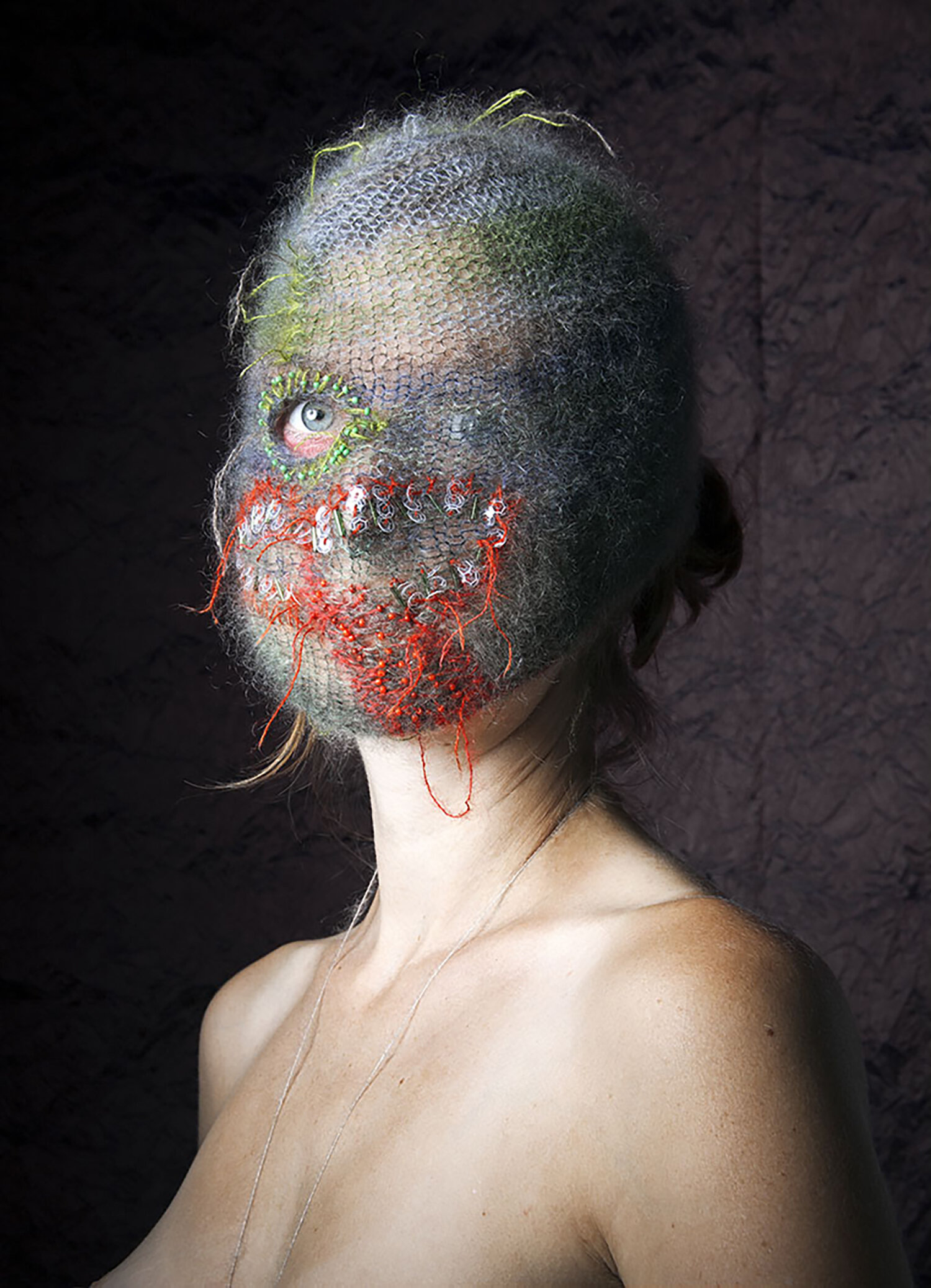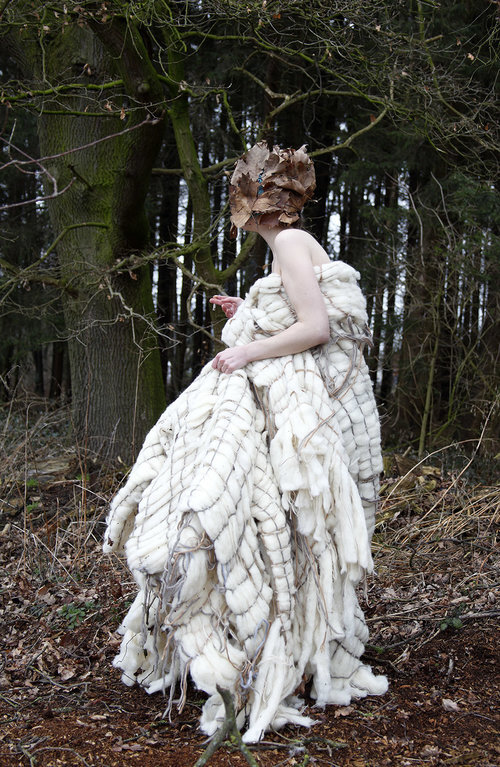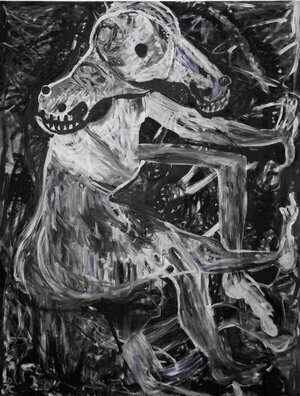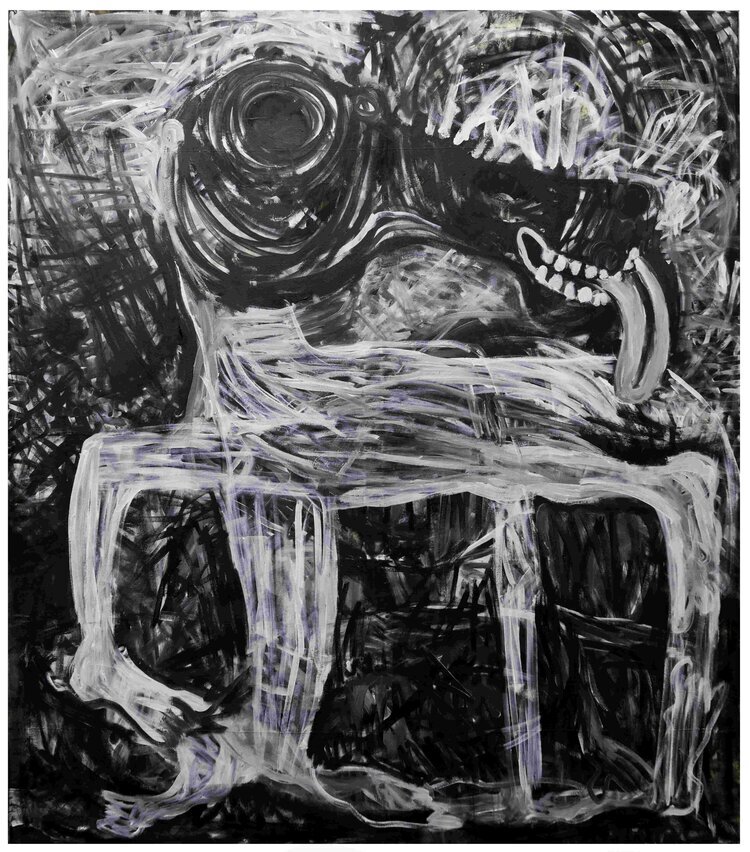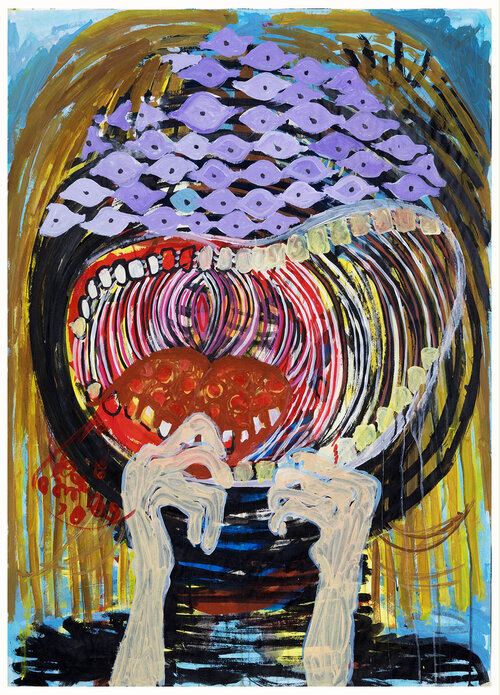judas companion
Jasmin (2020)
Mohair, Silk, Glass Beads. 14Wx10Hx1D (inches)
For purchase inquiries please contact the artist at jaz@judascompanion.com
To learn more about the artist visit www.judascompanion.com
Work by Judas Companion. All Rights Reserved.
Work by Judas Companion. All Rights Reserved.
Work by Judas Companion. All Rights Reserved.
Work by Judas Companion. All Rights Reserved.
Work by Judas Companion. All Rights Reserved.
Work by Judas Companion. All Rights Reserved.
Work by Judas Companion. All Rights Reserved.
Artist’s statement
My work is based on processes of mutation and transformation of the human being. In my artistic practice I make masks and create self portraits whilst wearing them.
My aim is to distort the human figure and - at the same time - emphasize what is hidden in the psyche, the emotional world of the human being. I create characters that arise from my subconscious and bring them to life via hand-knitted, crocheted, and embroidered face masks. To me, expressing myself whilst metamorphosizing and slipping into roles is a matter of staying sane. It brings to life that which has been suppressed within the psyche, what cannot be put in words yet is a vital part of my identity. Masks enable me to be physically part of the artwork. I create photographic scenes in which I am the actor, scenes which often show the body naked, with only the face covered. How we dress is turned upside down. The mask becomes humiliating instead of
protecting. With this, I aim to show the vulnerability of the human being.
I use soft yarn of bright colors and sometimes add embroidery. I deliberately clash impressions of the sweet/soft with the horrific/spooky to create a feeling of disturbance.
I want the viewer to ask questions about belonging, feeling settled and confront them with their own emotions. Especially during difficult times like these, I am aware of the importance of dealing with negative feelings like anxiety and fear. Although I have created masks for 15 years, they have only now become omnipresent in our society.
About the Artist
Judas Companion, an award-winning artist, was born in 1984 in Hamm, Germany. She studied at the Kunstakademie Dusseldorf, and earned an MA in Fine Art at Central Saint Martins in London and an MA in Fashion at Goldsmiths University in London.
Select Exhibitions
Electronic (2020-21) London Design Museum, London, UK
No Measurements Required (2019), Nicoletti Contemporary, London, UK
A Face in Me (2018), Sarabande Foundation, London, UK
Artist’s Feature
Judas Companion was our featured artist for April 7-13, 2021. We will feature a new artist of the Babel Masks Ad-Hoc Collective each week.
10 questions
1. In your artist’s statement, you write: “My work is based on processes of mutation and transformation of the human being. My aim is to distort the human figure and - at the same time - emphasize what is hidden in the psyche, the emotional world of the human being.” What connection do you follow between distortions in the psyche and transformations of the body? DO they necessarily reflect one another? Or do you experiment with the idea of dissonance between the two?
The distortion of the psyche I write about refers to the feeling of wanting to be somebody else, wanting to become something else, which I visualise through transformations and change of identity via masks. I address the feeling deep inside me that I am somehow not "right" and therefore must go through changes, which are then implemented on the outside (by wearing a mask).
2. You write, “I create characters that arise from my subconscious and bring them to life via hand-knitted, crocheted, and embroidered face masks. To me, expressing myself whilst metamorphosizing and slipping into roles is a matter of staying sane.” Do you see this as a shamanic process or the artifact of inward journeys? When the content of your subconscious is expressed, does it deliver something to the world, or does it free something that wasn’t able to come out before? What can you share about this?
Rather than a shamanic process, I would say this is as an artistic way of speaking: through expressing my feelings, I bring things to the surface through this process, but not in a directly translatable way. It sometimes takes me years to understand the message I was creating in a certain artwork. I do use my work to understand myself and to delve into my subconscious. Sometimes I cannot directly read the "language" I am expressing myself through.
3. Do you attach narratives to the characters that emerge as you create masks, don them, and assume their personae? Did they arrive with their own narratives already, or do you only experience a narrative (if at all) once the mask is on your face?
If narratives arise, then they do so only after I have created a character. It might be right after the shooting or years later, when I have understood the artwork’s purpose. I create very much through intuition and impulse, which means I often make the work before I understand its meaning consciously. In that case, I can’t attach narrative to a work I don’t yet fully comprehend.
4. The transformation of the human being via the donning of a sacred mask is a component of spiritual practices throughout human history. Do you connect your transformations and distortions via a mask to one or more of these traditions?
Yes and no. I have always enjoyed looking at masks that come from all periods of history. At the same time, I try to develop my own work independent of any tradition. That said, I always find inspiration from the masks of certain traditions.
5. In your works in 2020, there is a series of black and white paintings depicting transformation between the human and the equine. Why did this transformation arise for you, and what is your sense of the relationship between the horse and man?
Transformations in painting are a way for me to get out of myself, to visualise what is inside me, to bring it to the surface. The horse figure symbolises wildness, shyness, power, strength.
6. On your website you show a series of paintings on paper that depict a series of heads and in some cases figures that are wildly and eerily distorted, with features multiplying or disappearing or the mouth taking over the main part of the image. These give me the impression of divine, immortal or devilish creatures as that takes over the human being. A common feature though is the howling mouths, sometimes crowded with teeth or suggesting the mouths of other creatures. What can you tell us about this series?
These works on paper are closely related to the masked photographs/films I create. These characters are dismantled, dysfunctional, mutated. They express my felt sense of being incomplete. In painting, I exaggerate the incomplete quality; I provoke it to the surface. Such paintings explore the dysfunctionality of the human being (myself) from a different angle.
7. Which artists have influenced you over the years? Who were some of your earliest role models, artistically speaking? As you have proceeded in your career, have you had the opportunity to mentor other artists?
Many artists have influenced me. One person in particular has been Alexander McQueen, in part because I was a resident at the Alexander McQueen Foundation during 2018/19. He strongly shaped my entire approach to making art as expressed in fashion or, conversely, choosing the medium of fashion for my art.
8. How has the pandemic affected your work and your practice? How has it affected your particular artistic communities?
I continue to make work, but I am unable to present my art since so few physical spaces have been open during the pandemic. Currently, there are no prviate viewings in London, which has affected my ability to make new contacts over the past year.
9. People go through transformations and distortions throughout life, and the fresh encounter of each one, sometimes mysterious, sometimes joyful, sometimes terrifying, sometimes all three, is palpable in your work. What do you hope to share with people who are going through many transformations and distortions – of work, of life, of self, of family and spiritual systems, etc – as a result of the covid-19 pandemic?
I aim to tell people that it is okay to not be okay. To me, it is hard to accept myself as I am, and ambivalent feelings about the self arise all the time. I hope to communicate that the beauty is not in perfection, but in expression, no matter what.
10. What advice would you give to an artist who is just beginning their path? What do you wish someone had advised you when you were beginning your career?
Hard to say, what I would have needed and still do need is trust that works will unfold, no matter how clear I am in my head about it. The only advice I can give is: keep going and things will unfold.
